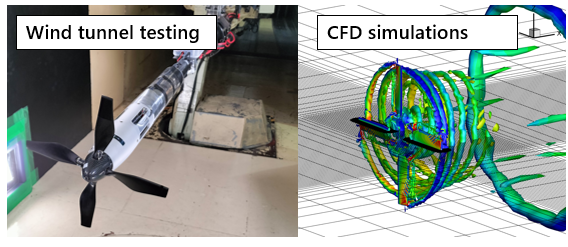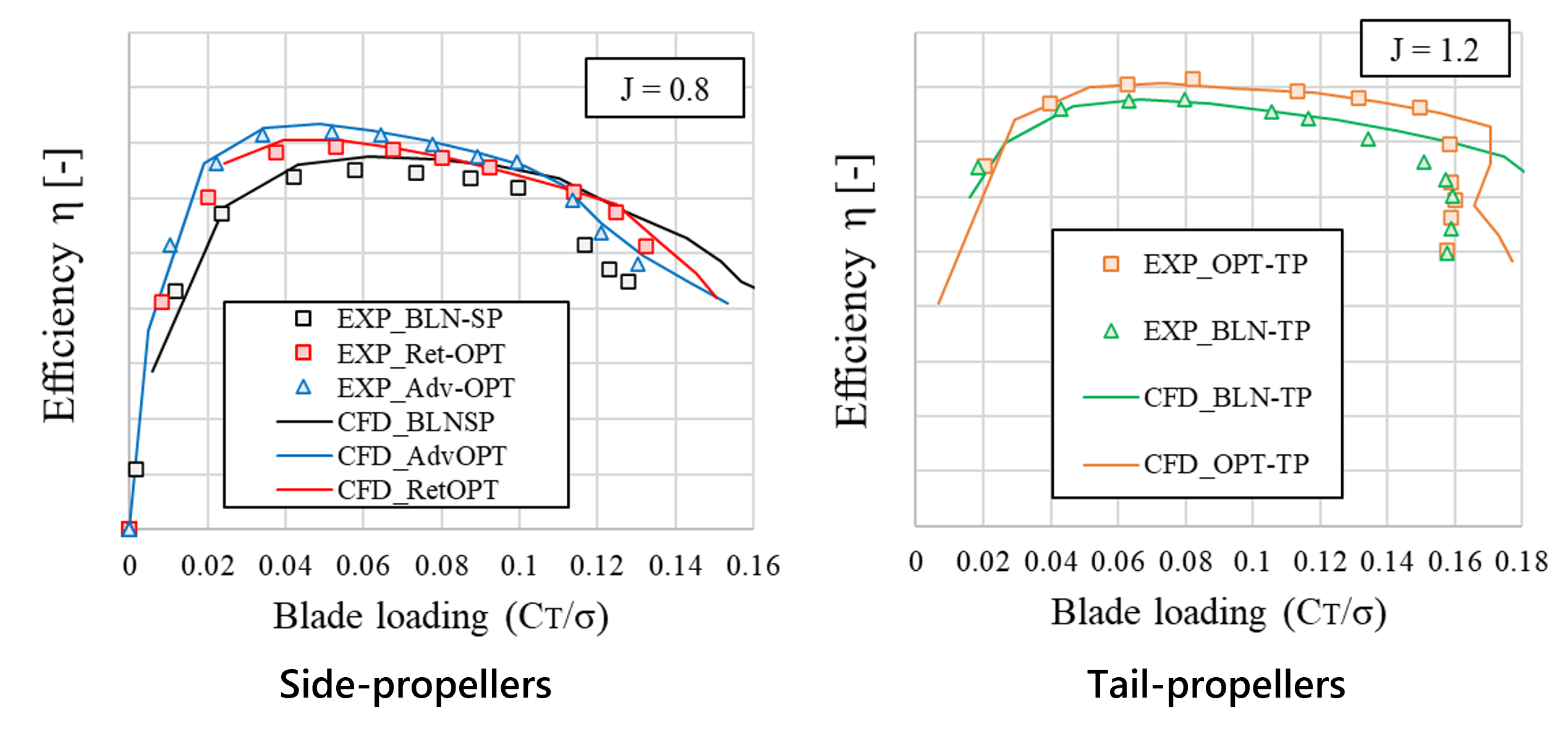Optimal design of propellers for compound helicopters
JAXA Supercomputer System Annual Report February 2024-January 2025
Report Number: R24EDA201C21
Subject Category: Aeronautical Technology
- Responsible Representative: Kanako Yasue, Aviation Technology Directorate, team leader, Aviation Integration Innovation Hub, Airmobility Design Team
- Contact Information: Keita Kimura, Japan Aerospace Exploration Agency, Aviation Technology Directrate(kimura.keita@jaxa.jp)
- Members: Fumihiro Kajiwara, Keita Kimura, Yasutada Tanabe
Abstract
In this project, optimal design study has been conducted to improve the performance of the side and tail propellers for compound helicopters proposed by JAXA. CFD analysis is utilized to match the design flight conditions, and the performance of the propellers is evaluated based on the objective function. By optimizing the objective function, the desired shape has been obtained. For the side propeller design, we aimed to create a design that would maintain hovering performance while also having high forward flight performance, and for the tail propeller, it is aimed to generate large thrust, so that it would be possible to fly at twice the speed of conventional helicopters. This year, analyses has been conducted in response to the wind tunnel test of the designed propeller, and the results are compared with the test data.
Reference URL
N/A
Reasons and benefits of using JAXA Supercomputer System
In the optimal design of propeller blades, it is necessary to conduct performance analysis of a large number of shapes within a set design variable space. In order to perform this concurrently, it is essential to utilize the computational power of a supercomputer.
Achievements of the Year
Figure 1 presents the setup of the propeller wind tunnel test conducted in this study and provides an overview of the CFD analysis. In the wind tunnel test, models of both the baseline and optimized propeller shapes were fabricated, and measurements were carried out with specified wind speed, rotational speed, and pitch angle. A corresponding CFD analysis was then performed, and a comparison of results for propeller performance has been made.
Figure 2 shows a comparison of the propeller thrust and efficiency obtained from the wind tunnel test and the CFD simulations on JSS3. For the side propeller, data were acquired for three blades: the baseline and two optimized shapes (left and right), while for the tail propeller, obtained for the baseline and a optimized. The wind tunnel test and CFD analysis shows good agreement, confirming the validity of both methods and demonstrating a trend toward improved performance for the optimized propeller.
Publications
- Oral Presentations
Keita Kimura, Hideaki Sugawara and Yasutada Tanabe, "Optimal Design and Wind Tunnel Testing of Propellers for a Winged Compound Helicopter," 50th European Rotorcraft Forum, September 10th 2024, Marseille, France
Usage of JSS
Computational Information
- Process Parallelization Methods: N/A
- Thread Parallelization Methods: OpenMP
- Number of Processes: 1
- Elapsed Time per Case: 72 Hour(s)
JSS3 Resources Used
Fraction of Usage in Total Resources*1(%): 0.34
Details
Please refer to System Configuration of JSS3 for the system configuration and major specifications of JSS3.
| System Name | CPU Resources Used(Core x Hours) | Fraction of Usage*2(%) |
|---|---|---|
| TOKI-SORA | 929882.60 | 0.04 |
| TOKI-ST | 2440001.24 | 2.50 |
| TOKI-GP | 0.00 | 0.00 |
| TOKI-XM | 0.00 | 0.00 |
| TOKI-LM | 108.01 | 0.01 |
| TOKI-TST | 154695.09 | 2.78 |
| TOKI-TGP | 0.00 | 0.00 |
| TOKI-TLM | 0.00 | 0.00 |
| File System Name | Storage Assigned(GiB) | Fraction of Usage*2(%) |
|---|---|---|
| /home | 1061.69 | 0.72 |
| /data and /data2 | 111340.29 | 0.53 |
| /ssd | 31106.15 | 1.67 |
| Archiver Name | Storage Used(TiB) | Fraction of Usage*2(%) |
|---|---|---|
| J-SPACE | 0.00 | 0.00 |
*1: Fraction of Usage in Total Resources: Weighted average of three resource types (Computing, File System, and Archiver).
*2: Fraction of Usage:Percentage of usage relative to each resource used in one year.
ISV Software Licenses Used
| ISV Software Licenses Used(Hours) | Fraction of Usage*2(%) | |
|---|---|---|
| ISV Software Licenses(Total) | 7.22 | 0.00 |
*2: Fraction of Usage:Percentage of usage relative to each resource used in one year.
JAXA Supercomputer System Annual Report February 2024-January 2025




